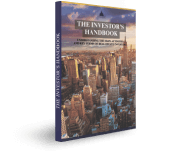The IMF World Economic Outlook offers a somewhat pessimistic view of the global economy, with weak long-term growth and a belief that the current inflation is transitory. The report also discusses the potential for a return to ultra-low interest rates.
1. Inflation: A Short-Lived Phenomenon
The IMF report contends that the current inflation spike is primarily due to pandemic-related disruptions in supply and demand, rather than fractured global supply chains, which would require higher interest rates to become the new standard. The analysis implies that various economic strengths and weaknesses and capital flows have only had a modest effect on natural interest rates.
2. Government Over-Borrowing and Decarbonization Costs
The IMF warns that if governments borrow excessively or if decarbonization proves to be expensive, pushing energy prices up, these factors could significantly impact natural interest rates in the long run.
3. Potential Obstacles to Globalization
Another long-term concern highlighted by the IMF is the possibility of hindrances to globalization, such as wars, which could further affect natural interest rates.
4. The Threat of Stagflation
The report suggests that low growth is a more significant risk than high inflation and interest rates. Lackluster productivity and unfavorable demographics in major Western economies could result in stagflation – a scenario of low productivity and inflation.
5. Forecasts for Growth Slowdown and Inflation Reduction
IMF Chief Economist Pierre-Olivier Gourinchas projects a particularly pronounced growth slowdown in advanced economies, from 2.7% in 2022 to 1.3% in 2023. He also predicts a drop in global headline inflation from 8.7% in 2022 to 7% in 2023, with underlying core inflation proving more persistent.
6. Continuation of Quantitative Easing
If developed economies struggle to achieve low-inflation stability, policymakers might resort to further quantitative easing or other balance sheet adjustments. While this could boost asset prices, it could also worsen the disparity between asset prices and the underlying economy, possibly leading to valuation crashes and resource misallocation.
7. Challenges in the Construction Sector
The construction sector faces unique challenges, as highlighted by Oxford Economics analysis. While easing supply chain pressures could help reduce core inflation, construction materials prices are expected to remain at least 15% higher than pre-pandemic levels. If a wage-price spiral occurs, the sector may become more susceptible to tighter lending controls and higher interest rates, potentially resulting in a $2 trillion loss in construction activity up to 2027.
8. The Impact on Real Estate
The market may experience assets price growth with the continuation of quantitative easing. As a result, this could potentially cause a significant decrease in property valuations and result in the misallocation of resources, leading to severe consequences for certain property sectors. This is particularly true when considering the current inflation spike and its potential impact on the real estate market. A sudden increase in inflation can create uncertainty and volatility in the market, which can lead to a decrease in property valuations. Moreover, it can also impact the ability of investors and property owners to make informed investment decisions and allocate resources efficiently, which can exacerbate the situation further. Therefore, it is crucial for real estate investors to remain vigilant and take a proactive approach to manage their portfolios and mitigate potential risks.
9. Vulnerability of Service Sector
In most developed economies, the service sector plays a crucial role in driving economic activity, accounting for more than two-thirds of the total output. While addressing supply chain bottlenecks is essential in curbing inflation, it can only have a limited impact on reducing inflation in the service sector. Thus, other measures need to be implemented to manage and control inflation in the broader economy.
10. Financial Fragmentation and Government Debt
The IMF report concludes that recent increases in real interest rates are likely temporary. Once inflation is under control, central banks in advanced economies may ease monetary policies and bring real interest rates closer to pre-pandemic levels. The degree to which this occurs will depend on the emergence of alternative scenarios involving persistently higher government debt and deficits or financial fragmentation.
11. Risks and Uncertainty
The International Monetary Fund (IMF) has emphasized that the potential negative impacts on the global economy have increased due to the recent financial turmoil. The IMF’s outlook suggests that the risks in the global economy are largely slanted toward negative outcomes. The IMF highlights that various factors such as the COVID-19 pandemic, rising geopolitical tensions, trade conflicts, and unpredictable market reactions pose significant threats to economic growth.
Additionally, the IMF warns that certain sectors of the economy, particularly the property sector, could face serious consequences due to the current inflation spike. The IMF states that the valuation crashes and misallocation of resources could lead to a dangerous situation for the property sector, which would subsequently affect the overall economy. Therefore, it is crucial to address these issues to stabilize the economy and ensure sustained economic growth.
The ability of governments and central banks to navigate these uncertain times will be crucial in determining the global economy’s path in the coming years. Policymakers will need to tread a fine line between controlling inflation and avoiding the suffocation of economic growth.
12. Implications for Investors
As central banks navigate this uncertain economic landscape, investors must remain vigilant and be prepared to adapt their strategies. With the potential for both low growth and inflation, as well as the possibility of stagflation, investment decisions must take into account the various risks and challenges facing different sectors of the economy, particularly the construction and service sectors.
Are you interested in learning more about multifamily real estate investing? Our team of experienced professionals is here to help. Whether you’re looking for advice on conducting market research or need assistance in identifying the best investment opportunities, we have the knowledge and expertise to guide you through the process. Subscribe to our YouTube channel to access informative videos and expert discussions on multifamily real estate investing. Follow us on Instagram for inspiring visuals and exclusive content. Check out our new customized ChatGPTs: Real Estate Investing Coach and Real Estate. Ready to elevate your real estate investment journey? Contact us now to schedule a consultation and take the first step towards achieving your financial goals in the multifamily real estate industry.




























